40 km north of Walvis Bay we visit Swakopmund, our first stop today. Swakopmund is a city with a strong German colonial presence in its buildings and streets. When you walk there, you seem to be in a Bavarian village with shopping malls, pedestrian and paved streets, the Deutsche Afrika Bank, villas and townhouses and a very European atmosphere. After walking around, we walked to the sea where we found our first Himba market, one of the most important tribal groups in the country, you can read more about these tribes here in this link.
The history of this town dates back to 1892, when German soldiers decided to settle in this port in German Southwest Africa (former name of Namibia – you can read a summary of the country’s history and its apartheid particular in this link). They imported many buildings of European origin and later built second homes and summer houses. The settler population began living in Swakopmund and used the black population in the area to use it as slaves, domestic workers and workers in the service of the settler. You can see samples in the Swakopmund Museum (Entrance 30 NAD pp and daily hours from 10am to 5pm).
Following the C34 coast road, we will fully enter the skeleton coast, an area of the Namibian coast located in the northwest of the country, where there are strong sea currents caused by the Benguela sea current. This current causes heavy ocean fog and very strong waves that have made it a frequent place for shipwrecks. It is also said that this name comes because sailors who hunted whales threw their bones here and it was easy to find them on the shore. It is for all these reasons that it receives the name of Skeleton Coast, the coast of the skeletons. Bushmen call this part the area God created with anger. The Portuguese, who sailed this area in the 15th and 16th centuries, called these coasts the gates of Hell. The truth is that these names say a lot about this inhospitable place, which the government decided to make a National Park.

Around the coast, you can see different remains of ships wrecked due to wind, bad weather and sandbanks in this coastal area. It is a very arid area, where you can be hundreds of miles without seeing anyone. Many plants and insects depend solely on the moisture in the mists. They have recorded many documentaries in the area about the survival of animals in the extreme desert: giraffes, elephants, black rhinos, baboons, springboks, hyenas… among others.
We decided to go to see the wrecked Portuguese fishing boat Zeila Shipwreck which is before reaching Henties Bay on its way to Cape Cross. It is also a very suitable area for Wild Camping, where along the coast you can see a lot of cars and people, stopping for picnics and bivouacs in the open air or with a tent on the top of the car.
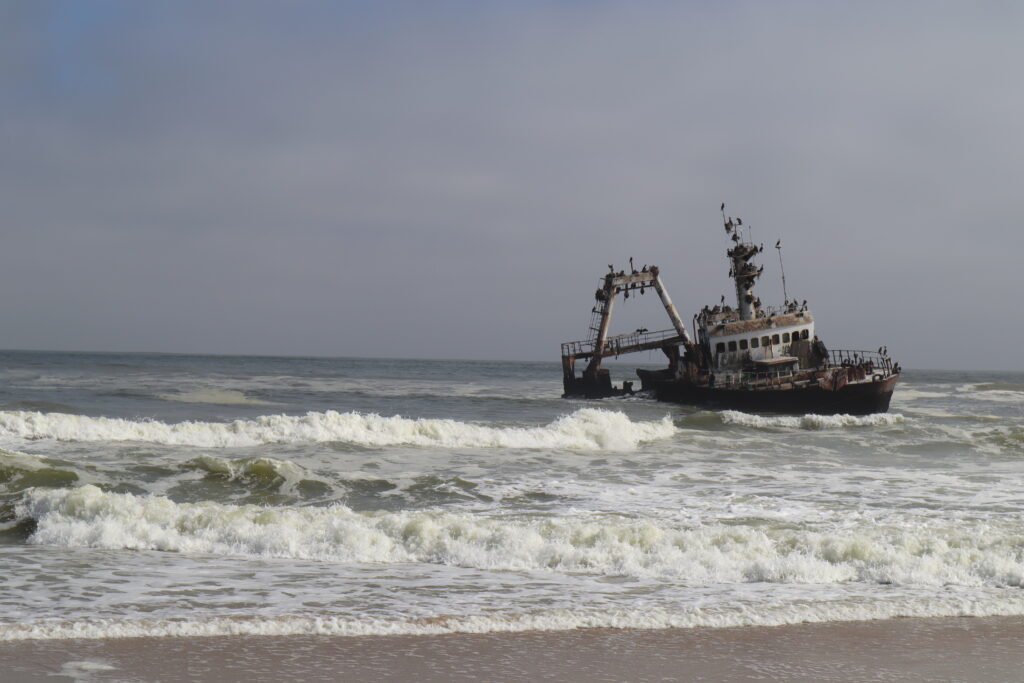
It is for these reasons that they make this place a special place, intact and at the same time curious. In the middle of this skeleton coast, we find the famous Cape Cross Cape.
Cape Cross is located 120 km from Swakopmund. It is a very famous cape that faces the South Atlantic and has a large population of sea lions. It is one of the largest colonies in the world of these specimens, home to about 100,000 sea lions. At some point, it can be as high as 200,000, and that’s just one of the points in the country that you can’t miss if you like animals!

It is currently a protected natural area and is called the “Cape Cross Seal Reserve”. This strategic point in history, located on the coast of the Skeletons, is a good stopping point to spot these fantastic animals and contemplate them in their natural habit. To enter the reservation, you have to pay 80 NAD / pers and 10 NAD / car. Opening hours are 10 a.m. to 5 p.m. We got there in the late afternoon, and there was no one there. We had the whole sea lion colony to ourselves!
The first thing you hear when you get out of the car is the stinky, strong smell of hair and fish that this place has caused by all these animals also with the screams of these funny animals. If you are a person who is quite bothered by strong odors, do not hesitate to bring a small buff or handkerchief (with a little cologne) and place it under your nose.
In the reserve, there is a walkway where you can see this fantastic place from different points, we had never had this feeling of being surrounded by so many animals. No matter where you looked, there were animals, some sunbathing, others sleeping, others playing, others marking territory and fighting…
South African sea lions are very similar to seals, but can be distinguished by their small ears. Male individuals can weigh about 350 kg and females, half. This coastal area is where the Benguela sea current flows, bringing large amounts of plankton in this area, encouraging many fish to feed on them. So sea lions have a great feast just when they get into the water.
During the last months of the year, female sea lions give birth to their young. The breeding of the young lasts about 3-4 years. This past 2020, however, more than 7,000 dead pups were found off the coast of Namibia, due to a synchronized mass abortion of female sea lions that has alerted the national and international scientific community. The causes may be due to a poor diet of a colony due to lack of fish that reduces its fat reserves, pollution, an infection of a bacterium… These facts, unfortunately, are increasingly present in habitats natural conditions in the world (as in the case of dead elephants in Botswana), and become another frightening alert of nature.
To sleep we found different accommodation options in Henties Bay, but we also recommend you venture out with a night of free camping in front of one of the beaches on the coast or inland by the D1918 towards Usakos, as we did.
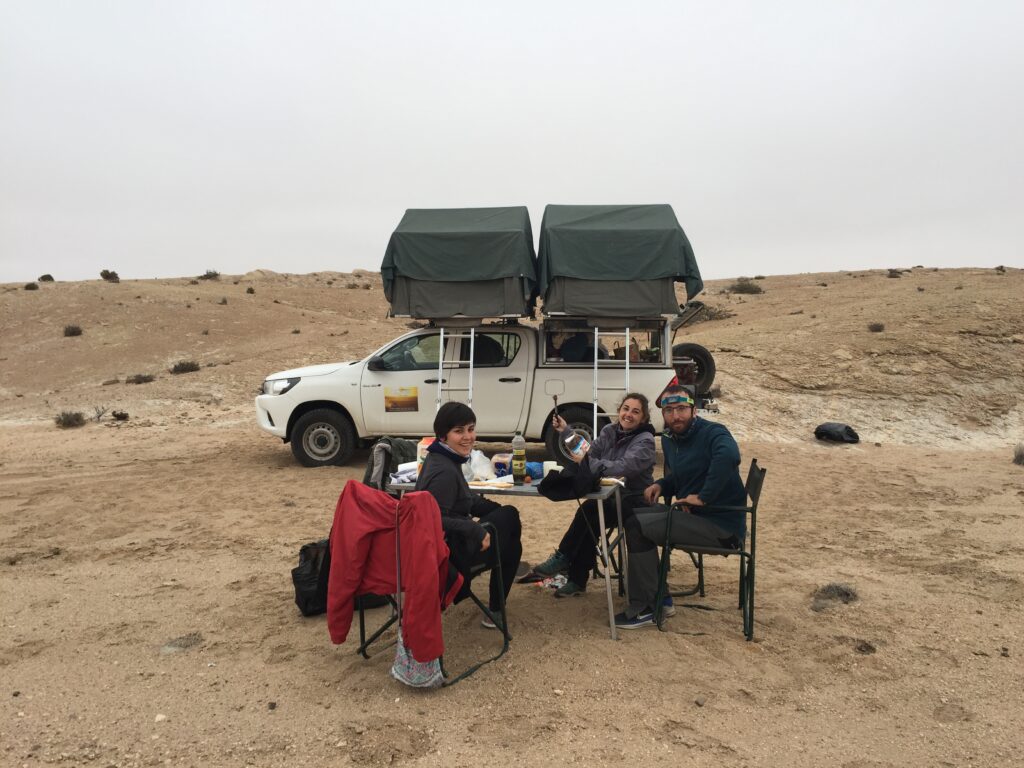

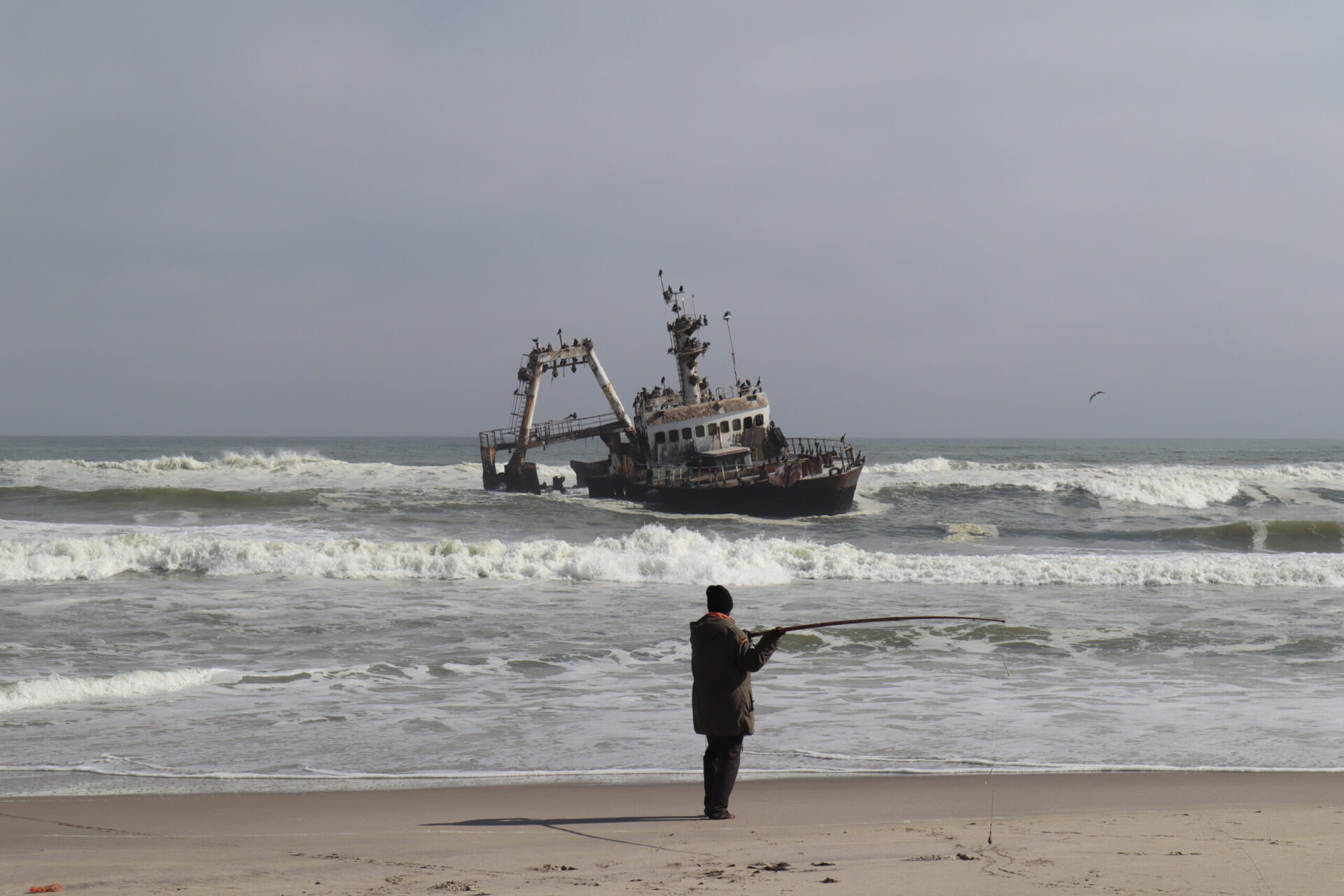
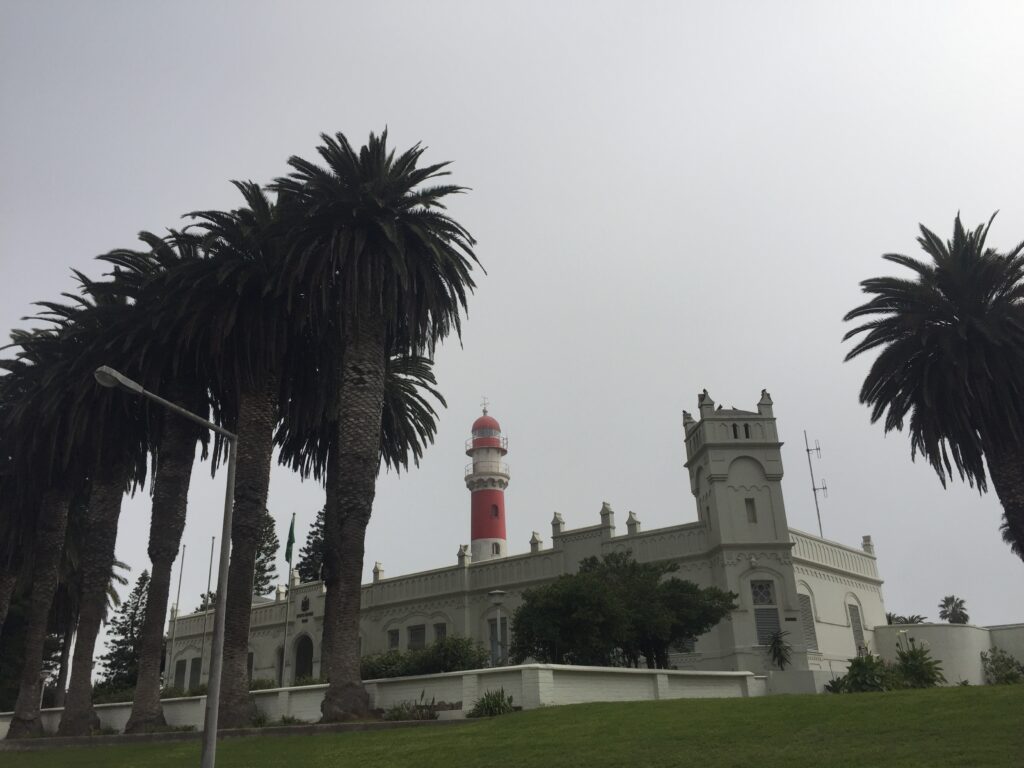

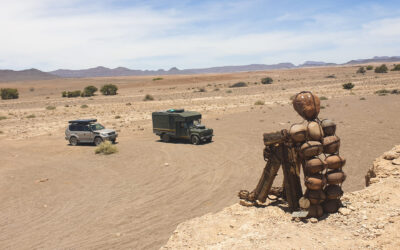

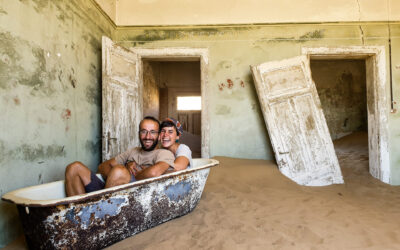
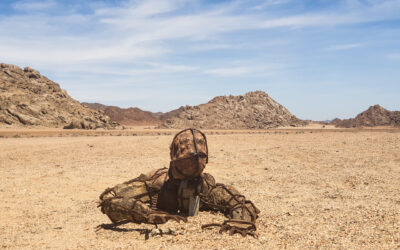
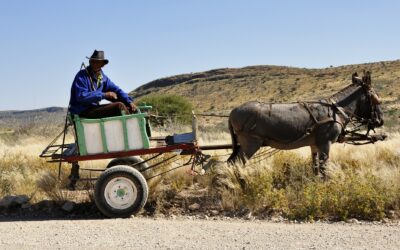
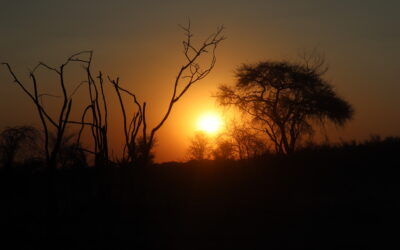
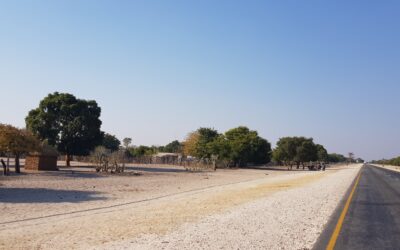

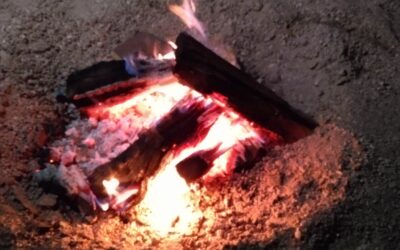
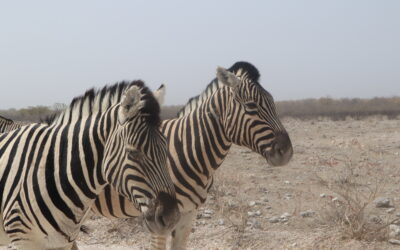
0 Comments